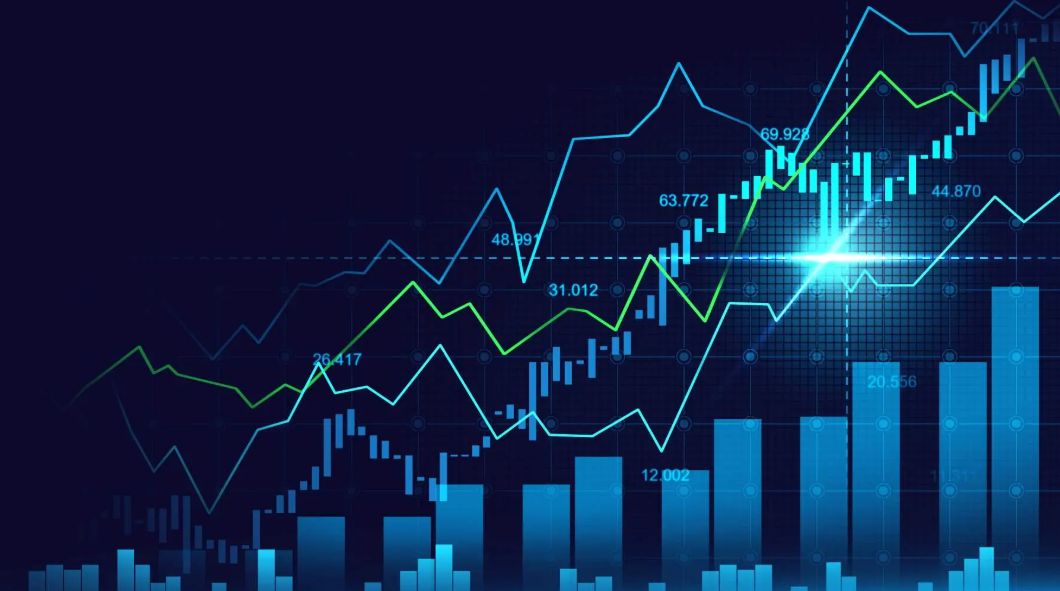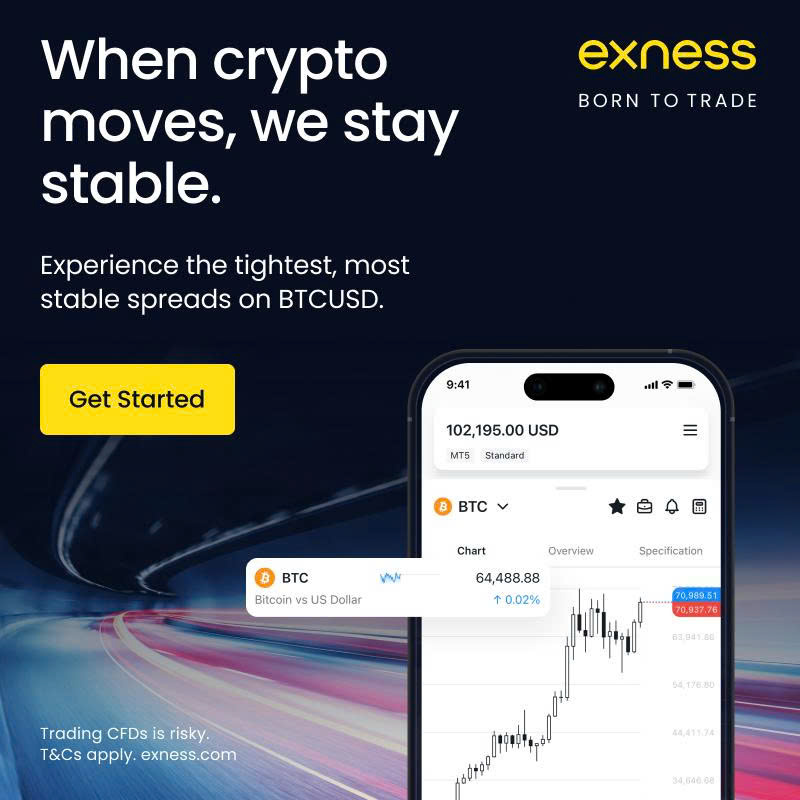
6 minute read
How to Start Forex Trading in Namibia: Step-by-Step Guide
from Exness
by Exness Blog
If you’re in Namibia and wondering how to start forex trading, the answer is simple: you can start today with a smartphone, internet connection, and as little as $10. Forex trading in Namibia is legal, accessible, and increasingly popular among young people looking for online income opportunities. But starting right requires more than just signing up with a broker. In this guide, we’ll walk you through everything you need to begin forex trading in Namibia—from choosing a broker to avoiding scams and managing your risk.
Top 4 Best Forex Brokers in Namibia
1️⃣ Exness: Open An Account or Visit Brokers 🏆
2️⃣ XM: Open An Account or Visit Brokers 💥
3️⃣ JustMarkets: Open An Account or Visit Brokers ✅
4️⃣ Quotex: Open An Account or Visit Brokers 🌐
Is Forex Trading Legal in Namibia?
Yes, forex trading is legal in Namibia. The Bank of Namibia does not prohibit individuals from trading forex online through international brokers. However, the country does not yet have a regulated local forex market or any Namibian-licensed forex brokers. This means if you want to trade forex, you will need to open an account with a reliable international broker that accepts Namibian traders.
Step 1: Understand the Risks Before You Start
Before jumping in, understand that forex trading is risky. You are trading currencies that fluctuate based on economic, political, and market news. Losses are common, especially among beginners. So if you want to succeed in forex, you must commit to learning and managing risk—this is not a get-rich-quick scheme.
Step 2: Get the Right Tools
To trade forex in Namibia, you don’t need expensive hardware. Here’s what you need:
· Smartphone or computer: A basic Android phone is enough to install trading apps like MetaTrader 4 (MT4).
· Stable internet connection: You’ll need access to real-time data and price charts.
· Trading platform: MT4 and MT5 are the most popular platforms.
· Email address: For signing up with brokers.
· Valid ID: A passport or national ID card for account verification (KYC).
Step 3: Choose a Trusted Forex Broker
Since there are no local brokers in Namibia, you’ll need to use a trusted international forex broker. Look for brokers that are regulated in major jurisdictions like the UK (FCA), Cyprus (CySEC), or South Africa (FSCA). Also, make sure they allow Namibian traders and accept deposits in a convenient way like bank cards, Skrill, or local payment methods.
Popular brokers that accept Namibians include Exness, XM, and IC Markets. These brokers offer low spreads, demo accounts, educational tools, and fast withdrawals.
Step 4: Open a Forex Trading Account
Once you choose a broker, follow these steps:
1. Go to the broker’s website and click “Open Account”.
2. Fill in your personal details (name, email, phone number).
3. Upload your ID and proof of address (like a utility bill or bank statement).
4. Choose your account type (standard, cent, or demo for practice).
5. Set your base currency—USD is recommended for global access.
Once your documents are verified (usually within 24 hours), you can log in to the trading platform.
Step 5: Deposit Funds to Start Trading
Most brokers accept deposits via:
· Bank cards (Visa/MasterCard)
· E-wallets (Skrill, Neteller)
· Cryptocurrency (some brokers)
· Local payment options (depending on broker)
Start small. If you’re new, deposit no more than $10 to $50. Focus on learning, not profit.

✅ Trade with Exness now: Open An Account or Visit Brokers 👈
Step 6: Learn the Basics of Forex Trading
You need to understand how forex trading works before risking real money. Key concepts include:
· Currency pairs: You’re always trading one currency against another (e.g., EUR/USD).
· Pips: A pip measures price movement.
· Leverage: This lets you control larger trades with smaller capital, but it also increases risk.
· Lot sizes: These determine how much money you risk per trade.
· Stop-loss and take-profit: These help you control your losses and lock in gains.
Many brokers offer free educational materials like videos, webinars, and articles. Use them. YouTube is also a great place to find beginner-friendly content.
Step 7: Practice with a Demo Account
Before trading with real money, use a demo account to practice. A demo account uses virtual money and helps you:
· Learn how to use the trading platform.
· Understand price movement and chart patterns.
· Test your trading strategy without financial risk.
Spend at least a few weeks on a demo account before going live.
Step 8: Start Trading with Real Money
Once you’re confident, switch to a live account and trade small. Stick to major pairs like EUR/USD or GBP/USD which are less volatile. Use tight risk management, such as:
· Never risk more than 1-2% of your balance per trade.
· Use stop-losses to limit potential losses.
· Avoid overtrading—quality over quantity.
Forex trading is a marathon, not a sprint. Focus on being consistent, not flashy.
Step 9: Manage Your Emotions
Most beginners lose money not because of bad strategies, but because of bad emotions. Fear, greed, and impatience are your worst enemies in trading. To manage your emotions:
· Create a trading plan and stick to it.
· Accept losses as part of the game.
· Don’t chase the market or revenge trade.
· Take breaks if you feel stressed or frustrated.
Discipline is the most powerful skill in forex trading.
Step 10: Track Your Progress and Improve
Keep a trading journal. Write down:
· The trade setup
· Your entry and exit points
· The reason you took the trade
· The result (profit/loss)
· What you learned
Review your trades weekly. Learn from your mistakes and successes. This feedback loop will improve your trading over time.
Bonus: Avoid Forex Scams in Namibia
Unfortunately, forex scams are common, especially on social media. Here’s how to protect yourself:
· Never trust anyone promising guaranteed profits.
· Don’t give your trading account login to anyone.
· Avoid “account managers” who want to trade for you.
· Don’t invest in “copy trading groups” unless offered by your broker directly.
· Only deposit with licensed, regulated brokers.
If it sounds too good to be true, it probably is.
Conclusion: Can You Really Make Money from Forex in Namibia?
Yes, but only if you treat it like a business. Forex trading in Namibia is a real opportunity, but also a real risk. Don’t rush. Focus on learning, discipline, and patience. Many traders take months or years before they become consistently profitable.
Start with a demo account. Choose a good broker. Learn every day. And most importantly, never trade with money you can’t afford to lose.
With the right mindset and strategy, forex trading can be a powerful tool for financial growth—even in a country like Namibia, where opportunities may feel limited. Your success depends not on your location, but your dedication.
✅ Trade with Exness now: Open An Account or Visit Brokers 👈
Read more:










